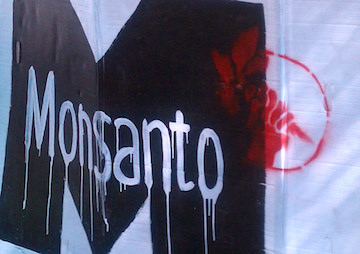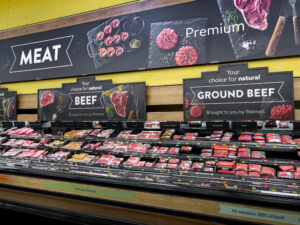As the War on Weed Winds Down, Will Monsanto Be the Winner?
The war on cannabis that began in the 1930s seems to be coming to an end. But skeptics question the sudden push for legalization, which is largely funded by wealthy investors linked to Big Ag and Big Pharma. Lisa @ Sierra Tierra / (CC-BY-2.0)
1
2
Lisa @ Sierra Tierra / (CC-BY-2.0)
1
2
In April, Pennsylvania became the 24th state to legalize medical cannabis, a form of the plant popularly known as marijuana. That makes nearly half of US states. A major barrier to broader legalization has been the federal law under which all cannabis – even the very useful form known as industrial hemp – is classed as a Schedule I controlled substance that cannot legally be grown in the US. But that classification could change soon. In a letter sent to federal lawmakers in April, the US Drug Enforcement Administration said it plans to release a decision on rescheduling marijuana in the first half of 2016.
The presidential candidates are generally in favor of relaxing the law. In November 2015, Senator Bernie Sanders introduced a bill that would repeal all federal penalties for possessing and growing the plant, allowing states to establish their own marijuana laws. Hillary Clinton would not go that far but would drop cannabis from a Schedule I drug (a deadly dangerous drug with no medical use and high potential for abuse) to Schedule II (a deadly dangerous drug with medical use and high potential for abuse). Republican candidate Donald Trump says we are losing badly in the war on drugs, and that to win that war all drugs need to be legalized.
But it is Green Party presidential candidate Dr. Jill Stein who has been called “weed’s biggest fan.” Speaking from the perspective of a physician and public health advocate, Stein notes that hundreds of thousands of patients suffering from chronic pain and cancers are benefiting from the availability of medical marijuana under state laws. State economies are benefiting as well. She cites Colorado, where retail marijuana stores first opened in January 2014. Since then, Colorado’s crime rates and traffic fatalities have dropped; and tax revenue, economic output from retail marijuana sales, and jobs have increased.
Among other arguments for changing federal law is that the marijuana business currently lacks access to banking facilities. Most banks, fearful of FDIC sanctions, won’t work with the $6.7 billion marijuana industry, leaving 70% of cannabis companies without bank accounts. That means billions of dollars are sitting around in cash, encouraging tax evasion and inviting theft, to which an estimated 10% of profits are lost. But that problem too could be remedied soon. On June 16, the Senate Appropriations Committee approved an amendment to prevent the Treasury Department from punishing banks that open accounts for state-legal marijuana businesses.
Boosting trade in the new marijuana market is not a good reason for decriminalizing it, of course, if it actually poses a grave danger to health. But there have been no recorded deaths from cannabis overdose in the US. Not that the herb can’t have problematic effects, but the hazards pale compared to alcohol (30,000 deaths annually) and to patented pharmaceuticals, which are now the leading cause of death from drug overdose. Prescription drugs taken as directed are estimated to kill 100,000 Americans per year.
Behind the War on Weed: Taking Down the World’s Largest Agricultural Crop
The greatest threat to health posed by marijuana seems to come from its criminalization. Today over 50 percent of inmates in federal prison are there for drug offenses, and marijuana tops the list. Cannabis cannot legally be grown in the US even as hemp, a form with very low psychoactivity. Why not? The answer seems to have more to do with economic competition and racism than with health.
Cannabis is actually one of the oldest domesticated crops, having been grown for industrial and medicinal purposes for millennia. Until 1883, hemp was also one of the largest agricultural crops (some say the largest). It was the material from which most fabric, soap, fuel, paper and fiber were made. Before 1937, it was also a component of at least 2,000 medicines.
In early America, it was considered a farmer’s patriotic duty to grow hemp. Cannabis was legal tender in most of the Americas from 1631 until the early 1800s. Americans could even pay their taxes with it. Benjamin Franklin’s paper mill used cannabis. Hemp crops produce nearly four times as much raw fiber as equivalent tree plantations; and hemp paper is finer, stronger and lasts longer than wood-based paper. Hemp was also an essential resource for any country with a shipping industry, since it was the material from which sails and rope were made.
Today hemp is legally grown for industrial use in hundreds of countries outside the US. A 1938 article in Popular Mechanics claimed it was a billion-dollar crop (the equivalent of about $16 billion today), useful in 25,000 products ranging from dynamite to cellophane. New uses continue to be found. Claims include eliminating smog from fuels, creating a cleaner energy source that can replace nuclear power, removing radioactive water from the soil, eliminating deforestation, and providing a very nutritious food source for humans and animals.
Your support matters…Independent journalism is under threat and overshadowed by heavily funded mainstream media.
You can help level the playing field. Become a member.
Your tax-deductible contribution keeps us digging beneath the headlines to give you thought-provoking, investigative reporting and analysis that unearths what's really happening- without compromise.
Give today to support our courageous, independent journalists.







You need to be a supporter to comment.
There are currently no responses to this article.
Be the first to respond.